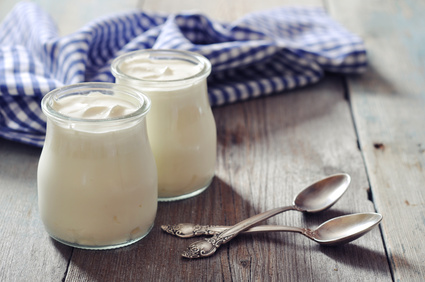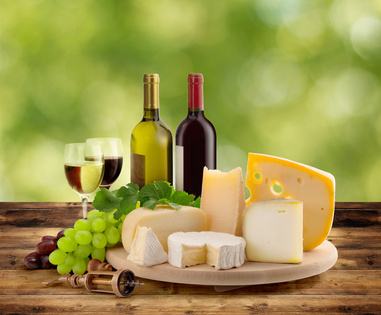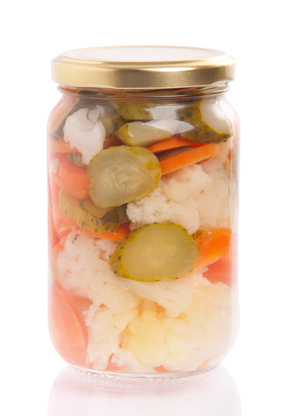Until recently, fermented foods have started to vanish from our preferred meals list. The traditional method of lacto-fermentation using salt (NaCl) has now been replaced by vinegar as our modern pickles and sauerkraut obviously depicts this. In the past people used wild yeast to leavened bread and other pastries, but now commercial yeast is being used to bake bread and pasta. Since Louis Pasteur introduced the method of pasteurization back in 1862, the idea that all micro-organisms are dangerous have been popularized, thus wine, beer and cheeses are being pasteurized instead of fermented. However, it has been established by modern scientists that our bodies need “good bacteria” (especially in our digestive track) to help break down foods and give us the much needed nutrients from them.
Sometimes it’s sad that we choose our own disadvantage simply because we think that new methods always outdoes the old ones, except the truth often disagrees with our views.
History of Food Fermentation
Fermenting foods is not new; in fact, our ancient ancestors have been doing this for a very long time. It is believed that the first winemaking factory originated in the Caucasus region in South Western Russia around 8,000 years ago in what is now the small, post-Soviet era country of Georgia. Meanwhile in Iran, particularly in the Zagros Mountains, about a hundred kilometers from the south of the Caspian Sea, 7,000-year old wine jars were excavated. This is very significant as both Georgia and Iran lie along the edges of the great Caucasus Lake (Caspian Sea) and people from that time would have undoubtedly spread the knowledge of fermentation in the surrounding areas.
Wine fermentation must have been the trend in those days as it kept spreading throughout Mesopotamia (Babylon 5,000 BC), Africa (Sudan 1,500 BC) and even in ancient South America (Mexico or the Yucatan Peninsula 2,000 BC). By 3,000 BC the Babylonians have developed milk fermentation process and around 1,500 BC the Egyptians learned how to put yeast in their bread.
Here are some of the benefits of food fermentation:
1. Improving the Digestive System
Much like our saliva, fermenting our foods is like prepping them for consumption and the nutrients are ready for our bodies to absorb. Some people are lactose intolerant and a good way to get around this is by fermenting dairy products like milk into yogurt, according to Dr. Joanne Slavin, from the Department of Food Science and Nutrition at the University of Minnesota. This way lactose intolerant folks can absorb the lactose even if they can’t drink milk under normal circumstances.
Some people are lactose intolerant and a good way to get around this is by fermenting dairy products like milk into yogurt, according to Dr. Joanne Slavin, from the Department of Food Science and Nutrition at the University of Minnesota. This way lactose intolerant folks can absorb the lactose even if they can’t drink milk under normal circumstances.
2. Fermented Foods help Balance the Good Bacteria in our Intestines
Researchers found that some diseases like asthma, yeast infections, lactose intolerance, gluten intolerance; irritable bowel syndrome, allergies and constipation are all linked to the imbalanced intestinal bacteria that helps you digest the food you eat. And you thought bacteria’s were bad.
3. Fermented Foods Produce Enzymes
The naturally occurring chemicals in your body (hormones, enzymes and other sugar compounds) help make you function at optimal capacity. The enzymes in particular helps you digest, breakdown foods and absorb them as nutrients. The problem is that as you age, the enzyme production in your body also declines, but fermented foods can help mitigate that.
4. Fermentation means more Vitamins
A different strain of bacteria present in fermented dairy products determines the increase in folic acid, pyroxidine, B vitamins, riboflavin and biotin. Take note that folic acid is very important for pregnant and nursing mothers, while pyroxidine, riboflavin, biotin and other vitamin B complex help the body convert food (carbohydrates) into fuel (glucose), which is used to produce energy.
5. Nutrients in Fermented Foods are better Absorbed than Non-Fermented Foods
Our bodies are not like container jugs that you can just fill with whatever you need. For instance, if you need more nutrients you can’t just eat more healthy foods, fruits and vegetables because if there’s a problem in your digestive system, then all those amounts of nutrients will probably not get absorbed by your body. You will need to fix with what is wrong with your body first before you ingest and absorb adequately the needed nutrients for it.
6. Food is Preserved for much Longer Periods of time when they are Fermented
Fresh or processed milk will last for 6 months or so in your fridge but yogurt and kefir (fermented dairy products) will probably go for years before they go bad. Sauerkraut, pickles and salsa will also remain edible for months. You can also ferment produce from your garden in case you can’t use them all up for yourself and then save them for future use.
7. It’s Cheaper and very Beneficial all Together
You can ask your grandparents how inexpensive this hobby was, and it still is! Nearly all of the food needed to make food fermentation possible is also very cheap. Example: A bundle of cabbage for your sauerkraut and a pennies’ worth of water, sugar and tea; to make a kombucha scoby pop soda/elixir juice or something.
8. Fermenting Food Enhances Food Flavor
 There’s a reason humans enjoy drinking wine and eating stinky cheese/ We human beings enjoy being comforted, whether physically or emotionally and I couldn’t think of any better example than me being indulged in tasty food all day. It’s very rare for anyone to reject wine, cheese, hotdogs, tortilla chips or salsa. Why? Well because they taste really good! And all of these are example of fermented foods.
There’s a reason humans enjoy drinking wine and eating stinky cheese/ We human beings enjoy being comforted, whether physically or emotionally and I couldn’t think of any better example than me being indulged in tasty food all day. It’s very rare for anyone to reject wine, cheese, hotdogs, tortilla chips or salsa. Why? Well because they taste really good! And all of these are example of fermented foods.
I started making Kefir a few months ago after being introduced by a friend and now I am drinking 1 glass every morning. My digestive system has improved a lot since I started. I suggest other to do the same.
Johanna Oosterwijk N.D.


